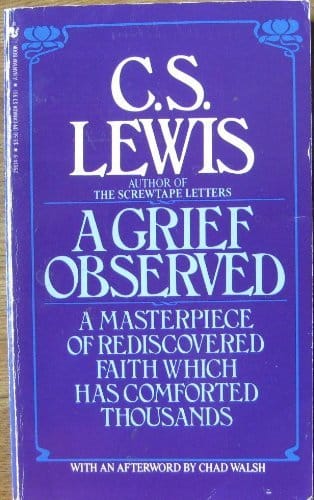A Grief Observed: C.S. Lewis’s Timeless Journal of Loss and Hope

Introduction: Why "A Grief Observed" Still Captivates Readers
First published in 1961 under the pseudonym N.W. Clerk, "A Grief Observed" chronicles C.S. Lewis’s agonizing journey after the death of his wife, Joy Davidman. More than six decades later, the slim volume continues to appear on recommended reading lists for anyone navigating bereavement. Its staying power lies in Lewis’s raw honesty, accessible prose, and relentless search for meaning in the face of overwhelming sorrow. For modern readers Googling phrases like “how to cope with grief” or “faith after loss,” this book remains an indispensable companion.
An Intimate Portrait of Grief
Unlike traditional self-help manuals, Lewis offers no neat stages or checklists. Instead, he records emotional whiplash—moments of rage, numbness, and tentative hope—captured in journal entries originally never meant for publication. This unfiltered narrative allows readers to recognize their own chaotic feelings and know they are not alone.
Throughout the text, Lewis often contradicts himself from one page to the next. These abrupt shifts mirror genuine mourning, when clarity and confusion collide hourly. The transparency dismantles the myth of “getting over” grief, replacing it with the more authentic concept of learning to live alongside loss.
Who Was C.S. Lewis When He Wrote "A Grief Observed"?
At the time of writing, Lewis was already internationally famous for works such as "Mere Christianity" and "The Chronicles of Narnia." He was considered a leading Christian apologist, celebrated for logical, confident explorations of faith. The death of Joy shattered that confidence, leaving Lewis questioning everything he had previously defended so eloquently.
This context intensifies the book’s impact. Readers witness a revered intellectual wrestling with the same doubts that plague ordinary people. His willingness to document vulnerability lends credibility to every insight that eventually emerges from the darkness.
Key Themes That Resonate Today
Raw Honesty Over Easy Answers
Search engines overflow with articles promising “10 quick ways to move past grief.” Lewis offers the opposite: permission to feel terrible without apology. His candor validates emotions that society often pressures mourners to hide.
Questioning Faith Without Fear
Lewis openly accuses God of indifference, even cruelty. Far from blasphemy, this interrogation becomes a gateway to deeper spirituality. For readers balancing belief and doubt, the book models faith that survives precisely because it is tested.
The Humanizing Power of Love
Joy appears throughout the narrative not as an idealized angel but as a real woman—witty, flawed, fiercely alive. By portraying her vividly, Lewis underscores that grief is the price of genuine connection, making the pain simultaneously unbearable and meaningful.
Hope as a Process, Not a Destination
Toward the end, Lewis describes grief as “a winding road” rather than a finish line. The metaphor reframes healing as ongoing, sparing readers the guilt of imagining they must someday feel completely “normal” again.
Literary Style and Structure
Composed of four short notebooks, the text shifts between aphoristic observations, theological reflection, and memoir. The conversational tone invites readers to overhear a private dialogue rather than endure academic lectures. This stylistic blend enhances readability, helping the book rank favorably for keywords like “accessible grief literature.”
Why "A Grief Observed" Matters in Modern Bereavement Care
Counselors, pastors, and support-group leaders continue to recommend the book because it complements psychological models with spiritual and philosophical depth. Its brevity encourages completion, crucial for those whose concentration is impaired by trauma. Additionally, the timeless narrative cuts across cultural lines, making it a universal resource for grief education programs.
Practical Takeaways for Readers Coping With Loss
- Accept emotional turbulence; inconsistent feelings are a normal part of the grief journey.
- Journal your thoughts to externalize pain, mirroring Lewis’s therapeutic process.
- Seek community—friends, counselors, or faith groups—to counteract isolating tendencies.
- Allow yourself to question beliefs; honest doubt can strengthen, not destroy, long-term faith.
- Revisit memories of your loved one regularly to keep connection alive in a healthy way.
Conclusion: A Book That Listens When No One Else Can
"A Grief Observed" endures because it refuses to wrap sorrow in platitudes. C.S. Lewis invites readers to sit with him in the ashes, acknowledging every tear while still searching for light. Whether you are newly bereaved or supporting someone in mourning, this small yet potent book offers companionship, validation, and cautious optimism. In a digital age full of quick fixes, its slow, honest witness to suffering stands out—ranking high in search results and, more importantly, in the hearts of those who grieve.